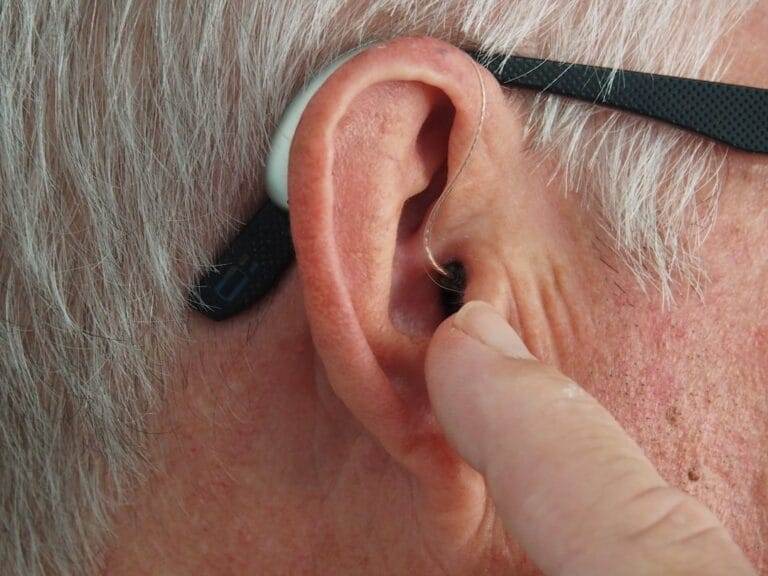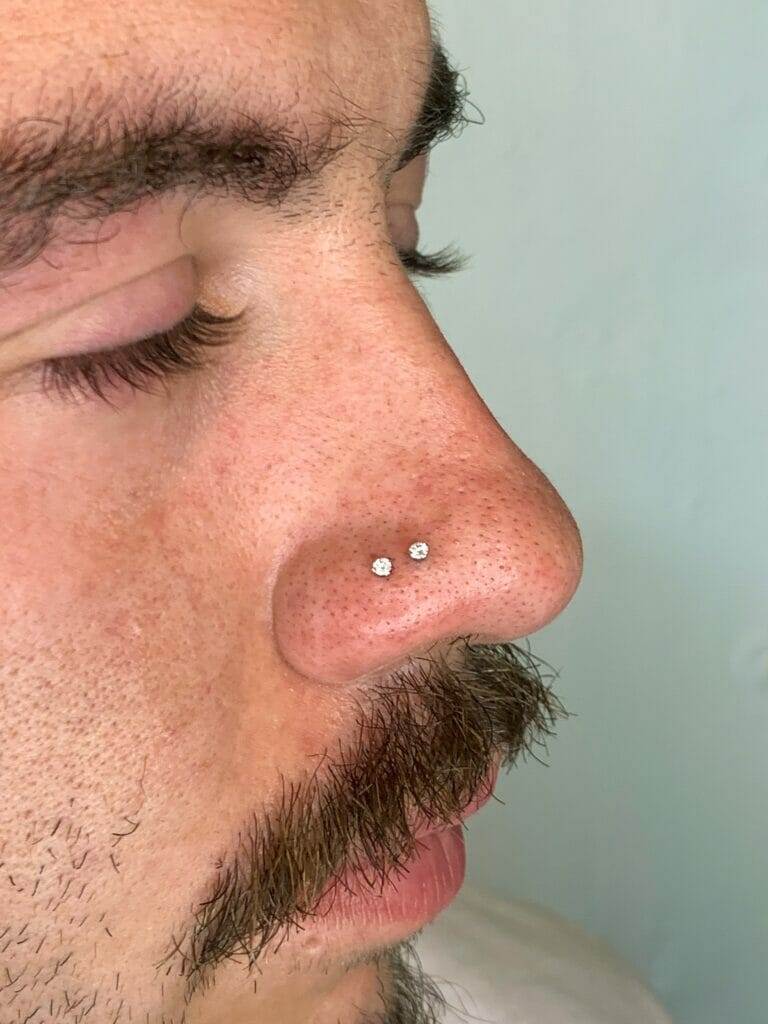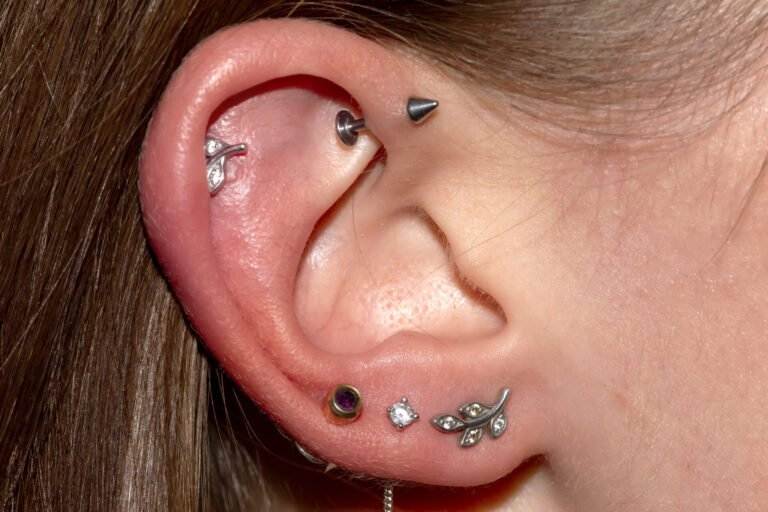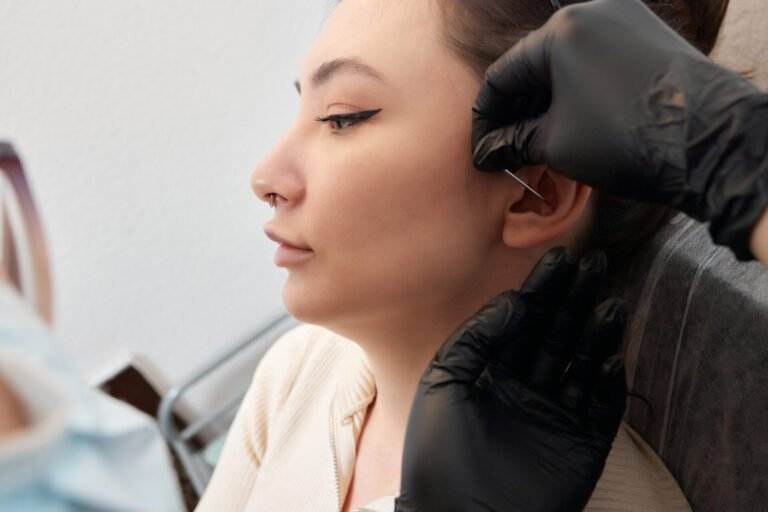Introduction
When it comes to body piercings, the excitement often overshadows an equally critical aspect: aftercare. Many individuals eagerly anticipate their new look but may forget that maintaining the health of their new piercing requires dedication and knowledge. Without proper aftercare, the journey to a stunning aesthetic can quickly lead to complications, including infections or prolonged healing times.
The Significance of Aftercare
Just as one would invest time in selecting the right jewelry or choosing a location for their piercing, allocating effort to aftercare is vital for ensuring a successful healing process. Think of aftercare as the final touch in your piercing journey; it’s what helps your body adapt to this change with grace. A few key points to consider:
- Healing Time: Different types of piercings have varying healing durations. Understanding this will help manage expectations.
- Commitment: Like fitness or skincare routines, consistency is crucial for the best outcomes.
- Preventing Infections: Effective aftercare minimizes the risk of infections, leading to fewer complications and faster recovery.
Embarking on a new piercing means not only expressing individuality but also committing to a nurturing process that supports your body’s healing. In the following sections, you’ll discover a comprehensive guide to effective piercing aftercare, from understanding the healing process to recognizing signs of infection.
Importance of Piercing Aftercare
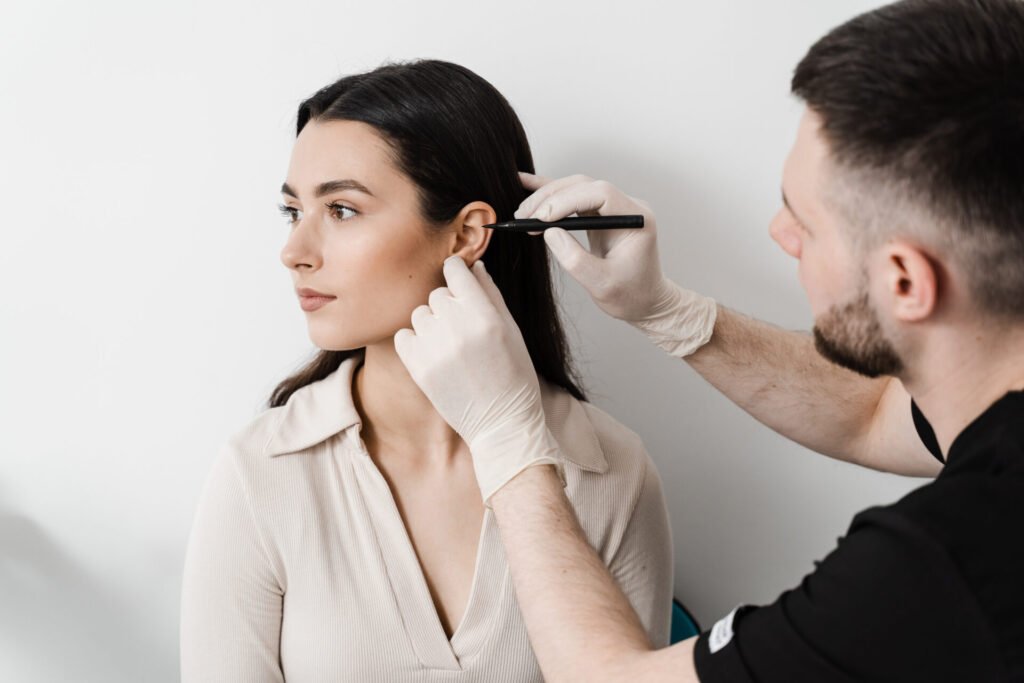
As one embraces their new piercing, it’s essential to recognize that the aftercare phase is just as critical as the decision to get pierced itself. Neglecting aftercare can lead to complications that might mar one’s journey towards self-expression. Proper aftercare not only enhances the healing process but also extends the life of the piercing.
Promoting Healthy Healing
Aftercare is the cornerstone of a successful healing process. Just as athletes follow a training regimen for peak performance, those with piercings must commit to an aftercare routine to ensure optimal healing. Here’s what to keep in mind:
- Reducing Inflammation: Proper aftercare can significantly minimize swelling and redness, allowing the area to heal smoothly.
- Enhancing Comfort: Thoughtful aftercare routines help alleviate irritation, making the healing journey more pleasant.
- Preventing Scarring: By taking care of the piercing, you can reduce the risk of developing raised scars or keloids.
Conserving Your Investment
Additionally, a new piercing represents an investment in personal expression. To secure this investment, adhere to a straightforward aftercare plan:
- Daily Routine: Incorporate gentle cleaning with a saline solution.
- Avoid Harmful Practices: Steer clear of touching or playing with the piercing to reduce the risk of infection.
Ultimately, prioritizing aftercare means fostering your piercing’s beauty while reducing the risk of potential problems. Armed with the right knowledge and commitment, anyone can enjoy their new adornments beautifully and healthily.
Understanding the Healing Process
Once the excitement of getting a new piercing settles, it’s time to focus on the healing process. Understanding the stages and potential challenges during healing can empower individuals to take better care of their new adornments and enjoy the journey without unnecessary worry.
Stages of Healing
The healing timeline can vary significantly based on the type of piercing, but it generally unfolds in three main stages:
- Initial Healing (1-2 Weeks):
- During this stage, the body begins to close the piercing channel. Expect slight tenderness and swelling.
- It’s critical to avoid touching or changing jewelry during this period.
- Tissue Formation (3-6 Weeks):
- The piercing starts to take shape as new tissue forms around it, which can make it feel itchy.
- This is when many people mistake itchiness for the need to adjust jewelry, which should be avoided.
- Maturation (6 Weeks – Several Months):
- The piercing fully settles into place during this final stage, making it more resistant to irritation or infection.
- While it may appear healed on the surface, underlying tissues can continue to develop for months.
Common Challenges During Healing
Despite the natural healing process, individuals may encounter various challenges that could prolong recovery. Being aware of these can help mitigate issues:
- Infection Risks: Signs include increased redness, swelling, or discharge. Early recognition is crucial.
- Allergic Reactions: Some materials may cause irritation. Opting for hypoallergenic options can help prevent problems.
- Movement Irritation: Jewelry that shifts frequently can elongate healing times. Keeping it stable is crucial.
By familiarizing oneself with the stages and challenges of healing, individuals can ensure they navigate this period smoothly and enjoy their new piercing effortlessly.
Proper Cleaning Techniques

Having established an understanding of the healing process, it’s now crucial to delve into proper cleaning techniques. Consistent and effective cleaning can make all the difference when it comes to the longevity and health of your piercing.
Daily Cleaning Routine
Creating a daily cleaning routine might seem daunting, but it’s a straightforward process that can become a part of your everyday life. Here’s a simple guide to follow:
- Wash Your Hands: Always start with clean hands to avoid introducing any bacteria to the piercing.
- Saline Solution Application: Use a saline solution to gently clean the area around the piercing. Soak a piece of sterile gauze or a cotton ball in the solution and apply it to the piercing for about 5-10 minutes.
- Rinse and Pat Dry: After soaking, gently rinse the area with clean water and pat it dry with a clean towel. Avoid rubbing, as this can cause irritation.
- Avoid Strong Cleansers: Steer clear of alcohol or hydrogen peroxide, as these can disrupt the healing process.
This routine takes only a few minutes and can keep potential complications at bay.
Recommended Cleaning Products
Choosing the right products is essential for maintaining a healthy piercing. Some recommended cleaning options include:
- Saline Solution (pre-packaged or homemade): A gentle solution that is safe for most piercings.
- Tea Tree Oil (with caution): A natural antibacterial agent, but should be diluted and used sparingly.
- Fragrance-free Liquid Soap: If necessary, this can be used to clean the jewelry during the initial healing phase.
By adhering to a proper cleaning routine and using the right products, individuals can significantly enhance their chances of a smooth, infection-free healing process, allowing them to showcase their new body art with confidence.
Dos and Don’ts of Piercing Aftercare
Now that you have a solid grasp of proper cleaning techniques, it’s essential to explore the dos and don’ts of piercing aftercare. Adhering to these guidelines can facilitate faster healing and reduce the risk of infections, ensuring that your new piercing remains as beautiful as intended.
Do’s for Faster Healing
Incorporating certain practices into your aftercare routine can accelerate the healing process. Here are some key dos:
- Keep It Clean: Regularly clean the area with a saline solution to prevent bacteria buildup.
- Stay Hydrated: Drinking plenty of water helps your body heal more efficiently and maintains healthy skin.
- Wear Appropriate Jewelry: Initially, opt for high-quality, hypoallergenic materials like titanium or surgical steel that won’t irritate the piercing.
- Be Mindful of Clothing: If it’s a body piercing, wear loose-fitting clothing to avoid friction that can hinder healing.
By integrating these practices, individuals can create a more nurturing environment for their healing body art.
Don’ts to Avoid Infections
Equally important are the practices to avoid, as they can lead to complications. Keep these don’ts in mind:
- Avoid Touching the Piercing: Constantly playing with or touching your piercing can introduce harmful bacteria.
- Don’t Change Jewelry Prematurely: Wait until the piercing is fully healed before considering any changes to your jewelry.
- Steer Clear of Pools and Hot Tubs: Chlorine and bacteria can pose significant risks to healing piercings.
- Don’t Apply Heavy Makeup: If your piercing is on your face, trying to conceal it with heavy makeup can lead to irritation and blockage of pores.
By following these dos and don’ts, individuals can significantly enhance their healing journey, ensuring their piercing remains a source of pride and not a cause for concern.
Managing Pain and Discomfort
As individuals embark on their piercing journey, some may experience pain and discomfort during the healing process. Understanding how to manage these sensations can help ease the experience and promote a quicker recovery.
Natural Remedies
For those who prefer a more holistic approach, there are several natural remedies that can alleviate discomfort without relying on pharmaceuticals. Consider trying the following:
- Chamomile Tea: Known for its soothing properties, chamomile can be brewed as tea and applied cool to the area using a clean cloth. This helps reduce inflammation and promotes relaxation.
- Witch Hazel: This natural astringent can be gently dabbed on the piercing area to relieve irritation and provide cooling relief.
- Aloe Vera Gel: Renowned for its healing properties, aloe vera can be applied topically to help soothe discomfort and support the skin’s recovery.
Incorporating these remedies into daily care routines can enhance comfort during healing.
Over-the-Counter Options
If natural remedies aren’t enough, over-the-counter medications can also offer quick relief. Here are common options to consider:
- Ibuprofen or Acetaminophen: These pain relievers can effectively manage discomfort and reduce swelling. Always follow the recommended dosage.
- Topical Creams: Look for hydrocortisone creams that help alleviate irritation and are safe to use on healing piercings, but consult a healthcare professional first.
By combining natural remedies with appropriate over-the-counter solutions, individuals can manage pain and discomfort effectively, allowing them to focus on the aesthetic enjoyment of their new piercing instead of distress from healing sensations.
Recognizing Signs of Infection
While managing pain and discomfort is essential, being vigilant about your piercing’s health is equally critical. Knowing how to recognize signs of infection can help prevent complications and result in a quicker recovery.
Common Symptoms
Infections may not always be obvious at first, so it’s vital to stay attuned to any changes. Some common symptoms to watch for include:
- Increased Redness and Swelling: While mild redness and swelling are normal, an excessive increase may be a red flag.
- Pus or Discharge: Notice any colored (yellow, green, or brown) discharge, which could indicate infection. Clear fluid is generally acceptable.
- Throbbing or Pulsating Pain: A persistent, throbbing sensation that worsens over time could indicate an issue.
- Heat: If the area feels warm to the touch, this could signal inflammation.
If you notice any of these symptoms, it’s essential to take them seriously.
When to Seek Professional Help
Not every symptom warrants a trip to the doctor, but certain situations should prompt immediate attention, such as:
- Persisting Symptoms: If symptoms last longer than a few days or worsen despite at-home care.
- Fever: Developing a fever in conjunction with the piercing symptoms could indicate a systemic infection.
- Severe Pain: If the pain escalates beyond tolerable levels, it’s essential to consult a professional.
Recognizing and addressing these signs of infection early can prevent more significant complications, ensuring the road to a beautifully healed piercing remains uninterrupted. Always prioritize health and well-being—you deserve to enjoy your body art without worry.
Lifestyle Adjustments for Better Healing



In addition to diligent aftercare, making lifestyle adjustments can significantly enhance the healing process of a new piercing. By tuning into your body’s needs and creating a supportive environment, you can promote faster recovery and overall wellness.
Diet and Hydration
What you consume plays a critical role in how your body heals. A balanced diet rich in vitamins and minerals supports immune function and tissue repair. Here are some dietary tips to consider:
- Increase Protein Intake: Foods like chicken, fish, beans, and nuts provide the building blocks needed for new cell formation.
- Copper and Zinc: Incorporate foods rich in these minerals, such as shellfish, seeds, and whole grains, to bolster healing and inflammation reduction.
- Stay Hydrated: Drinking enough water is crucial. Aim for at least eight glasses a day to keep your skin supple and enhance recovery.
Maintaining a well-rounded diet can significantly impact how efficiently your body heals.
Importance of Sleep
Equally important to diet is allowing your body adequate rest. Sleep is when your body performs many important healing functions. Here’s why it’s essential:
- Cell Repair: During deep sleep, your body repairs cells, making it critical for recovery.
- Immune Boost: Quality sleep supports immune function, helping to fend off potential infections.
- Mood Regulation: A well-rested body can better manage stress, aiding in overall wellness during the healing process.
By aligning your lifestyle with your healing goals through proper nutrition and rest, you can ensure that your piercing maintains its beauty while allowing your body the optimal conditions to heal effectively. Embracing these adjustments can pave the way for a smooth and enjoyable piercing experience.
Dealing with Healing Delays
Despite best efforts in aftercare, some individuals may encounter delays in the healing process of their piercings. Understanding the possible causes of these delays is vital for addressing them effectively and ensuring a smooth recovery.
Possible Causes
Several factors can contribute to healing delays, and pinpointing the cause can help in deciding the appropriate action. Here are some common culprits:
- Infection: Even with diligent care, infections can occur. If left untreated, they can severely hinder healing.
- Allergies: Allergies to jewelry materials can lead to irritation and inflammation. If your skin shows an unusual response, consider switching to hypoallergenic jewelry.
- Poor Aftercare: Inconsistent cleaning or neglecting recommended aftercare might slow down the healing process.
- Lifestyle Factors: Stress, lack of sleep, or an unbalanced diet can also impede healing. Balancing your lifestyle is crucial.
By being aware of these delays, individuals can take proactive steps to address underlying issues.
Seeking Advice from a Professional
If healing seems unusually prolonged or symptoms escalate, it’s wise to consult a professional. Here’s when to seek assistance:
- Persistent Pain or Discomfort: If pain continues beyond the expected healing timeline, a professional can assess the situation.
- Visible Signs of Infection: If redness, swelling, or discharge worsens, it’s crucial to get expert advice.
- Guidance on Jewelry: For those experiencing allergic reactions, a professional piercer can recommend suitable materials.
A professional consultation can provide peace of mind and practical solutions, helping navigate any challenges presented during the healing journey. Remember, timely intervention is key to ensuring that your piercing remains a source of pride and joy.
Healing Different Types of Piercings



As individuals explore the world of body art, it’s essential to understand that each type of piercing can have its own unique healing process. Proper care tailored to the specific type of piercing can significantly influence the overall healing experience.
Ear Piercings
Ear piercings are among the most common, ranging from lobes to cartilage. Healing times vary, with earlobe piercings typically healing within 6 to 8 weeks, while cartilage piercings can take several months. Here are some tips for ensuring optimal healing:
- Avoid Sleeping on the Piercing: For cartilage piercings, try to sleep on the opposite side to minimize pressure and irritation.
- Gentle Cleaning: Use a saline solution daily, avoiding the use of alcohol-based products to prevent dryness and irritation.
- Jewelry Choice: Opt for lightweight earrings in the healing phase to reduce stress on the piercing.
Body and Facial Piercings
Body and facial piercings vary widely—from navel to nostril—and each comes with its own care requirements. For example:
- Navel Piercings: Typically take 6 to 12 months to heal. Avoid tight clothing to prevent friction and irritation. Make sure to use a soft cloth that won’t snag on the jewelry during cleaning.
- Nostril Piercings: Generally heal within 2 to 4 months. Consistent cleaning with a gentle saline solution helps to reduce the risk of infection.
Overall, attentiveness to the specific needs of different piercings can promote smooth healing. By learning about the nuances of healing various types of piercings, individuals can feel confident in their aftercare approach and enjoy their new body art safely and beautifully.

